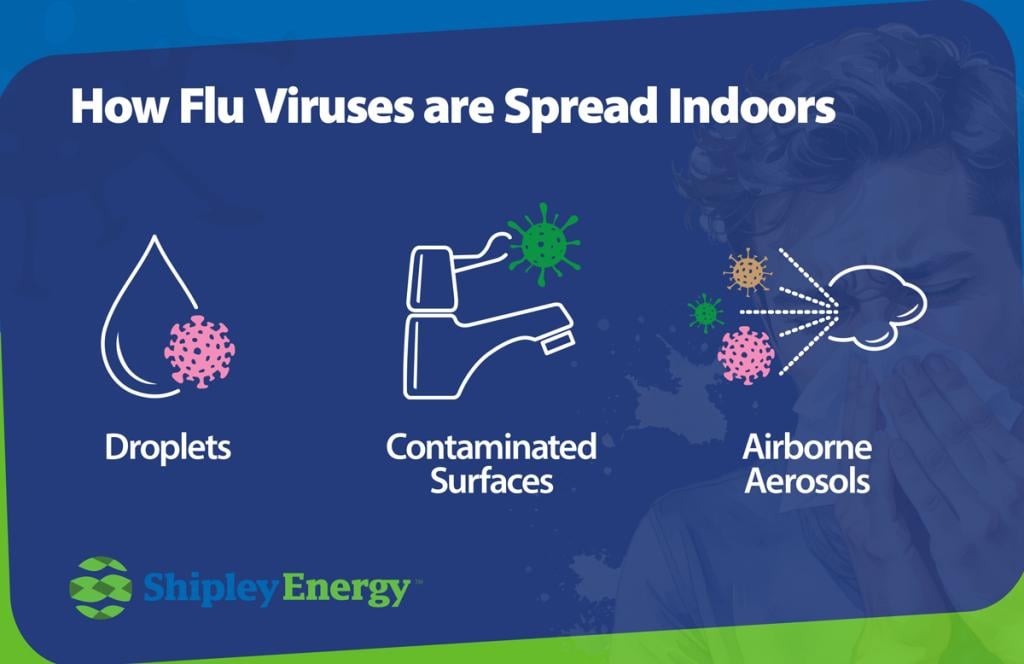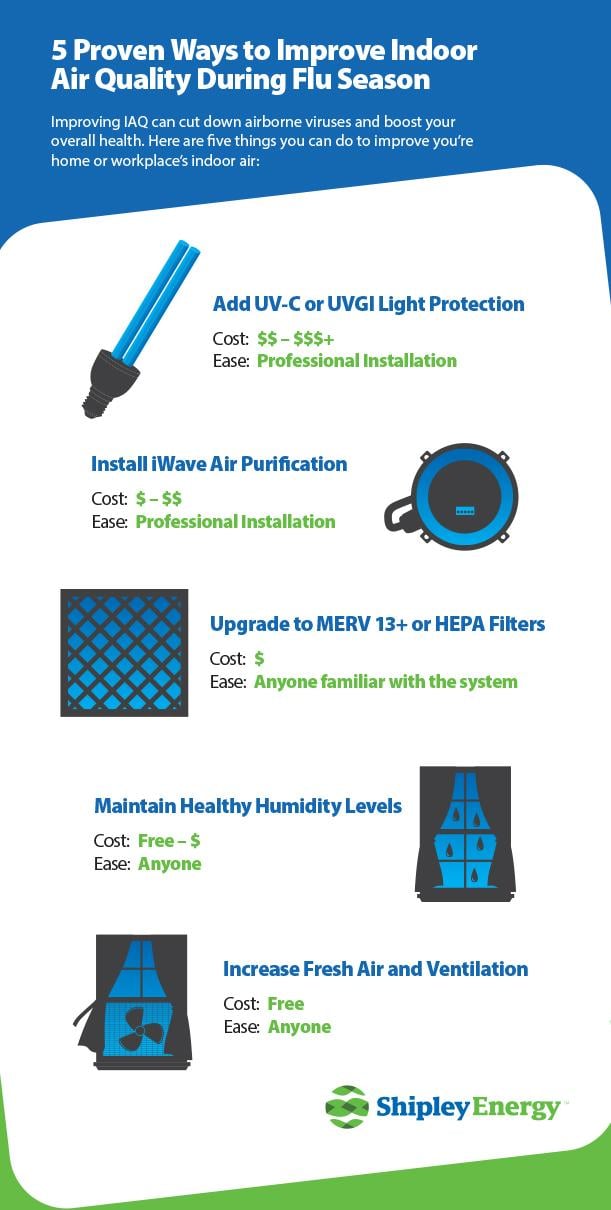
When sharing is not caring: Flu season and indoor air quality
When sharing is not caring: Flu season and indoor air quality
Flu season is here—and while most people focus on wearing masks and hand washing, there’s a powerful flu-fighting tool hiding in plain sight: the air inside your home.
Indoor air quality (IAQ) directly affects how easily flu viruses spread. If the air in your home or office is stale, dry, and poorly filtered, you could be giving germs the perfect environment to thrive, Shipley Energy reports.
How Flu Viruses Spread Indoors
According to the CDC, flu viruses move in three main ways:
- Droplets from coughs and sneezes.
- Direct contact with contaminated surfaces.
- Airborne aerosols—tiny particles that can stay suspended for hours.
In poorly ventilated indoor spaces, these airborne particles build up fast. That’s why indoor air quality can make or break your flu prevention plan.

Why Flu Season Hits Harder Indoors
During the colder months, we seal our homes to keep the heat in. While that’s great for comfort, it’s bad for air quality:
- Low ventilation means viruses linger longer.
- Dry winter air helps viruses survive.
- Heating systems recirculate the same stale air.
The EPA warns that without fresh air and filtration, viruses can spread more easily in winter. Indoor air quality needs to be on your family’s action plan for controlling sickness.
Quick Facts: Indoor Air Quality & Flu Season
- 90% of our time is spent indoors, where air can be more polluted than outside.
- Flu viruses can linger in the air for hours as tiny airborne particles.
- Dry winter air helps viruses survive longer—keep humidity between 30% and 50%.
- MERV 13+ or HEPA filters can capture virus-carrying particles smaller than 1 micron.
- UV-C light in HVAC systems can neutralize airborne viruses before they circulate.
- iWave air ionization technology is available for both residential and commercial HVAC systems.
- Improving ventilation dilutes indoor virus concentration—open windows or use mechanical fresh air settings.
- Better indoor air quality can improve focus, sleep, and overall health.

5 Proven Ways to Improve Indoor Air Quality During Flu Season
Improving IAQ can cut down airborne viruses and boost your overall health. Here are five things you can do to improve you’re home or workplace’s indoor air:
1. Increase Fresh Air and Ventilation
Open windows briefly, even in winter, or use your HVAC system’s fresh air settings. More fresh air dilutes viruses in the space making it less likely that you will contract them.
Cost: Free
Ease: Anyone
2. Add UV-C or UVGI Light Protection
UV-C or UGVI (Ultraviolet Germicidal Irradiation) light in HVAC systems can neutralize viruses by damaging their DNA or RNA, preventing them from reproducing. These ultraviolet lights can be installed in-duct or as upper-room disinfection systems.
Cost: $$ – $$$+
Ease: Professional Installation
3. Install iWave Air Purification
iWave ionization devices actively reduce particles, allergens, and certain pathogens. Options exist for both homes and commercial buildings, and are easy for a professional to install into existing systems.
Cost: $ – $$
Ease: Professional Installation
4. Upgrade to MERV 13+ or HEPA Filters
Higher-rated filters capture smaller particles, including virus-carrying aerosols. If your system can handle higher level MERV filters, it is easy to replace to gain higher levels of indoor air quality. Continue to replace them on schedule to maintain performance.
Cost: $
Ease: Anyone familiar with the system
5. Maintain Healthy Humidity Levels
Keep indoor humidity between 30% and 50%. Dry air increases virus survival, while proper humidity helps deactivate airborne particles.
Cost: Free – $
Ease: Anyone
The Health Benefits Go Beyond Flu Prevention
Better indoor air quality doesn’t just keep you from getting sick. Harvard’s Healthy Buildings Program links clean air to:
- Improved concentration and productivity.
- Better sleep quality.
- Reduced allergy and asthma symptoms.
Considering we breathe over 20,000 times a day, small changes in air quality can have a big impact.
Make “Sharing Clean Air” Your New Motto
Flu prevention isn’t only about avoiding contact—it’s about improving the air you share.
This flu season:
- Keep your air moving and clean.
- Invest in simple IAQ upgrades – call your preferred HVAC partner.
- Pair them with common-sense habits like wearing masks or washing your hands.
Because when it comes to germs, sharing is not always caring—but sharing clean air is.
This story was produced by Shipley Energy and reviewed and distributed by Stacker.



